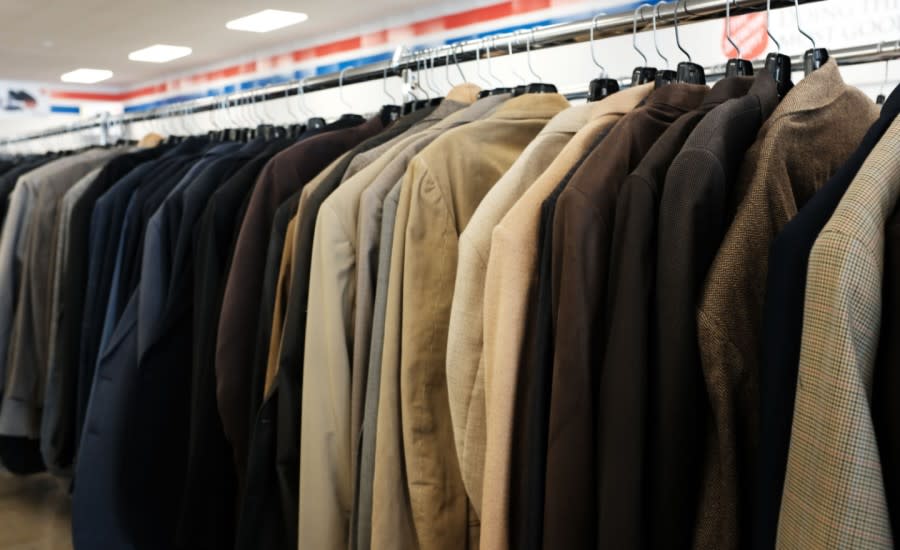5 ways inflation is shaping the economy
For anyone who grew up in the Clinton, Bush or Obama eras, inflation was a chapter in an economics textbook, a quaint piece of history from the Carter years.
And then, in the second half of 2021, the consumer price index (CPI) took off. The 12-month inflation rate peaked in June 2022 at 9.1 percent, the highest figure recorded since 1981.
Here are five ways inflation has shaped the nation’s economy — and will affect the year to come.
Soaring interest rates
First and foremost, the specter of double-digit inflation triggered a historic rise in interest rates, the dominant economic narrative of 2022. Federal regulators raised rates to slow inflation. Now, both forces are buffeting American consumers.
At the start of the year, the benchmark federal funds rate was 0.25 percent: effectively zero. The Federal Reserve has raised the rate six times this year. It now stands at 4 percent. And the Fed is set to announce its next action on Wednesday.
A reeling housing market
Higher benchmark rates mean higher mortgage rates. The average rate on a 30-year fixed mortgage passed 7 percent in October, up from around 3 percent at the close of 2021, the largest single-year increase in at least half a century.
The Fed acted aggressively to cool an overheated housing market. Home prices rose more than 40 percent from the start of 2020 through mid-2022.
Soaring mortgage rates will hobble home sales.
The National Association of Realtors predicts a 15 percent drop in 2022 and a 7 percent decline in 2023. Homes that do sell will go for less. Redfin predicts prices will fall by 4 percent in 2023 to a median value of $368,000.
Higher mortgage rates squeeze the buyer’s budget. The difference between a 3 percent rate and a 7 percent rate is $1,000 in a monthly mortgage payment on the average American home.
Downsized travel plans
A CNN headline announced the closing weeks of 2022 as the most expensive holiday travel season ever.
Airfares rose more than 40 percent between September 2021 and September 2022, when many holiday travelers contemplated itineraries, according to the Bureau of Labor Statistics. Gas prices are up nearly 20 percent from a year ago. Rental car rates are up by nearly half from pre-pandemic 2019.
IRS funding, child tax credit will be top issues in 2023
What to watch for in the housing market in 2023
More than 80 percent of millennial and Generation Z travelers say inflation tempered their holiday plans, according to a survey by Bankrate, the consumer finance company.
To compensate for higher costs, many travelers will take fewer, shorter holiday trips, book flights earlier and shop around for cheaper itineraries, the survey found.
On the upside, gas prices have eased off from the $5.02-a-gallon record set in June. Hotel rates have risen only modestly since pre-pandemic times.
Fewer gourmet grocery outings
With food prices soaring, that store-brand olive oil and chain restaurant menu are beckoning to the American consumer.
Food prices rose 11 percent from October 2021 to October 2022, according to CPI data. Restaurant food tabs are up a little less, groceries a little more. Eating out still costs a lot more than eating in.
Shoppers are finding creative ways to work around inflation: hunting for sale items, clipping coupons, checking prices online, switching to generic store labels, pivoting from beef to chicken and shopping at discount supermarkets and dollar stores, according to surveys by market researchers Dunnhumby and Bizrate Insights.

Restaurant traffic has largely rebounded to pre-pandemic levels, according to the industry journal Restaurant Dive. Restaurateurs struggled with staffing through COVID-19, but that crisis, too, has eased.
To counter inflation, diners are trading down from swanky farm-to-table restaurants to Applebee’s. Value-oriented chains Texas Roadhouse, Waffle House and Chipotle are doing brisk business.
But Americans seem to be spending more than ever on food delivery, despite the extra costs. One survey found that the average consumer makes more than 50 food delivery orders annually, according to industry journal The Food Institute.
More holiday borrowing
With inflation outpacing earnings, consumers are plundering their savings and amassing debt on credit cards with spiraling rates.
Americans embarked on a saving spree during the COVID-19 pandemic. That’s over. The national savings rate fell to 2.3 percent in October, down from 7.3 percent in October 2021 and 14 percent in October 2020. The savings rate has dipped this low only once before since 1960.
The nation amassed a mountain of savings during the pandemic. Its collective value peaked at more than $2 trillion in 2021. Inflation’s bite has reduced the savings stash to somewhere over $1.5 trillion.
“That trillion and a half dollars will run out sometime midyear next year,” devoured by inflation, Jamie Dimon, CEO of JPMorgan Chase, told CNBC this month.
In a recent survey by insurer New York Life, 36 percent of respondents said they had drawn down their savings in the first half of the year. Many more consumers will tap savings to finance holiday gifts and eggnog parties.
Americans are piling on credit card debt. The nation’s total card balance reached $925 billion in the third quarter of 2022, a 15 percent increase from the same period in 2021. It’s the largest annual jump in more than 20 years, according to the Federal Reserve Bank of New York.
That is worrisome news, because card rates are rising. Credit card interest rates hit 16.27 percent this August, up from 14.54 percent a year ago, according to Federal Reserve data. For people taking on a new card, the rate exceeds 20 percent.
For the latest news, weather, sports, and streaming video, head to The Hill.

